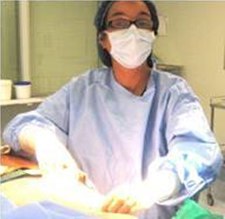

If you are staying in hospital, you will return to the ward to rest.Īfter the operation the wound may be covered with steri strips (paper tapes) and a dressing. If you have been admitted for day surgery, you will be able to go home after a short period of observation. Once the tissue is removed, it will be sent back to the imaging (X-ray) department where an X-ray or ultrasound of the tissue will be performed to confirm that the abnormal area is in the tissue that was removed. The surgeon will follow the wire and remove the piece of tissue at the tip.The wire will also be removed with the surgical specimen. The operation will usually be performed under general anaesthetic. In the operating theatre, you will be seen by an anaesthetist. When the wire is in position you will be taken to the hospital ward to wait for the operation. The operation – removing the abnormal breast tissue and the wire. This is sometimes done for large areas of microcalcification or if there is more than one area to be removed. In some cases, more than one guide-wire needs to be put in. Most patients don’t have any pain once the wire is taped in place. Once the wire is in position, it will be taped in place and a dressing will be put on. A mammogram may be performed even when the wire has been put in using ultrasound. This checks the position of the wire and helps the surgeon plan the operation. The mammogram is performed with minimal pressure on the breast so that it does not make the wire move. Often a mammogram will be performed after the wire has been inserted. The method of guidance used depends on the type of abnormality in the breast. An injection of local anaesthetic will be given to numb part of the breast and the guide-wire will be inserted under the guidance of the mammogram or ultrasound. The abnormal area in the breast will be found with a mammogram or ultrasound. A few hours before the operation, you will go to a breast imaging centre or an X-ray department. The guide-wire will be put in by a radiologist or a breast physician.

removing the abnormal breast tissue and the wire under general anaesthetic during an operation.īefore the operation – inserting the guide -wire.inserting a guide-wire under local anaesthetic before the operation and.There are two parts to guide-wire localised breast surgery: What is involved in a guide-wire localised breast operation? other types of breast biopsy are not able to confirm or exclude cancer and more tissue is needed for a pathologist to test.there is an abnormal area in the breast and fine needle biopsy or core biopsy is not possible or has given an inconclusive result and.cancer is confirmed and the area is being removed as part of ‘breast conservation’ treatment (wide local excision or ‘lumpectomy’) and the remaining breast tissue is being preserved.Guide-wire localised breast surgery may be recommended when: When is guide-wire localised breast surgery recommended? Guide-wire localised breast surgery can be performed as a day surgery procedure or it may be part of a bigger operation for breast cancer. This wire guides the surgeon to the correct area in the breast during the operation. A tiny wire (similar to fine fuse wire or fishing line) is placed in the breast before the operation.

Guide-wire localised breast surgery is a technique used to remove an abnormal area in the breast that can be seen on ultrasound or mammogram but cannot be felt clinically.


 0 kommentar(er)
0 kommentar(er)
